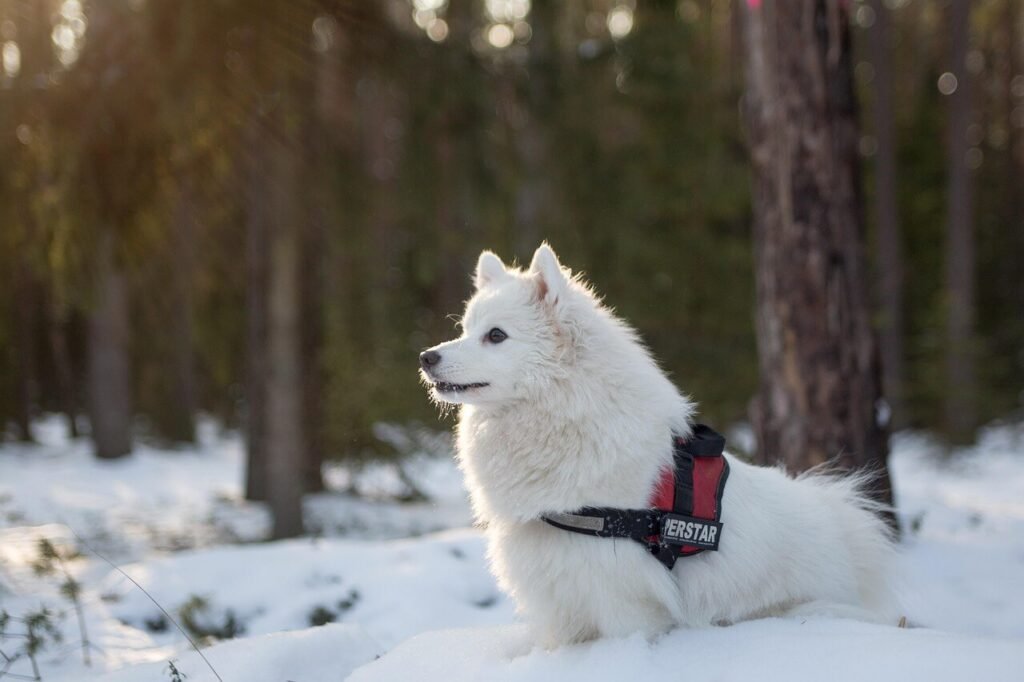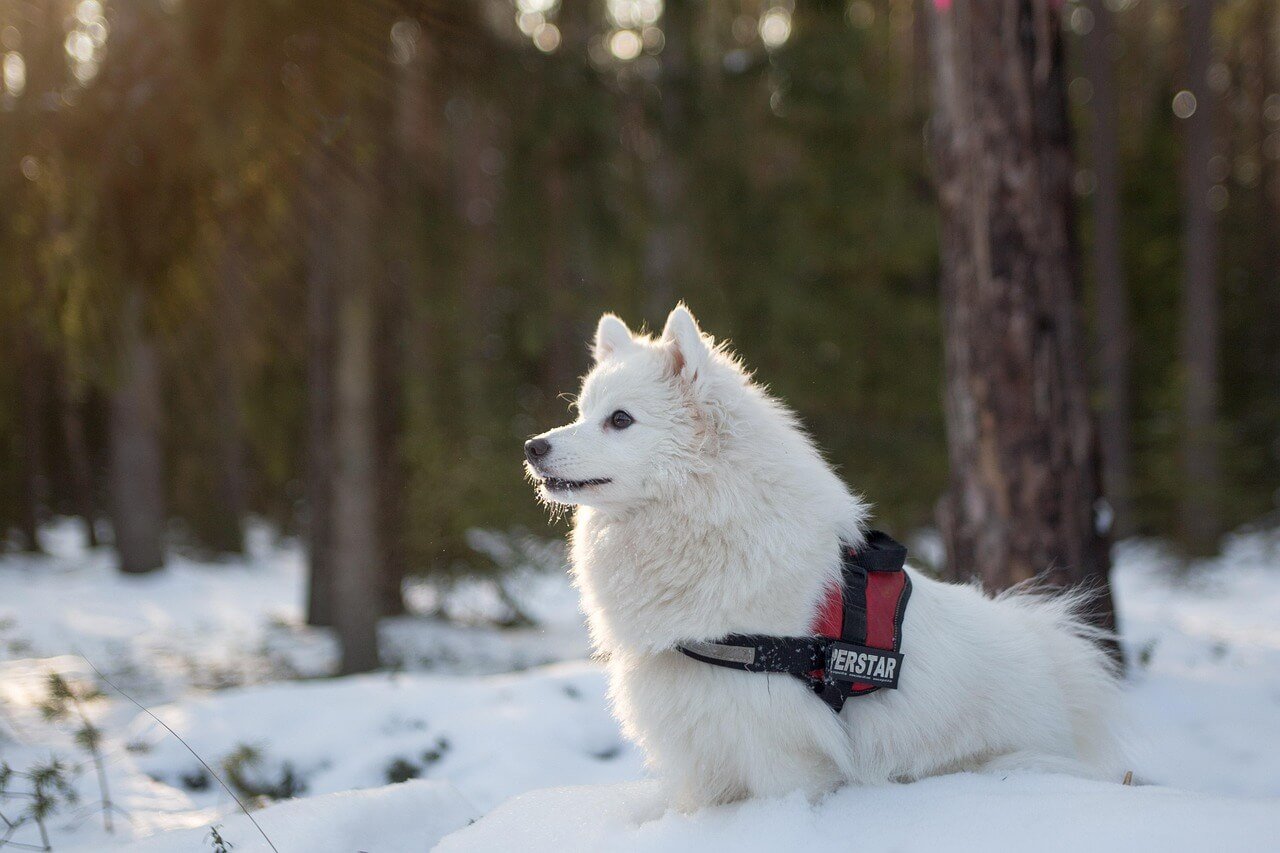What to Do If Your Dog Ate Flour: A Comprehensive Guide
It’s not uncommon for curious pups to get into things they shouldn’t, and if your dog has recently eaten flour, you might be wondering whether to panic or relax. While flour itself isn’t typically toxic to dogs, consuming large amounts can lead to digestive upset or other complications. Understanding how to respond when your dog ate flour is crucial for ensuring their safety and well-being. In this blog post, we’ll explore what happens when dogs ingest flour, potential risks, and steps you can take to address the situation. By the end, you’ll feel confident in handling this mishap and preventing future incidents.
Potential Risks of Dogs Eating Flour
While a small amount of flour is unlikely to harm your dog, larger quantities or certain types of flour can pose health risks. Here are some potential concerns to be aware of:
Digestive Upset
Consuming too much flour can cause bloating, gas, diarrhea, or vomiting due to its high carbohydrate content.Weight Gain
Flour is calorie-dense, and frequent consumption may contribute to unhealthy weight gain over time.Gluten Sensitivity
Some dogs are sensitive to gluten, which is found in wheat flour, and may experience allergic reactions or gastrointestinal issues.Toxicity from Specialty Flours
Certain flours, like xylitol-containing almond or coconut flour, can be toxic to dogs and require immediate veterinary attention.Choking Hazard
Dry flour can clump in the throat, potentially causing choking or difficulty breathing if swallowed without water.
Understanding these risks helps you assess the severity of the situation. If your dog ate flour, monitor them closely for any signs of distress or discomfort.
Immediate Steps to Take If Your Dog Ate Flour
If you discover that your dog has ingested flour, staying calm and taking prompt action is key. Follow these steps to ensure their safety:
Assess the Amount Consumed
Determine how much flour your dog ate. Small amounts are less concerning, but large quantities warrant closer observation.Check for Symptoms
Look for signs of digestive upset, such as vomiting, diarrhea, lethargy, or excessive drooling.Provide Fresh Water
Offer your dog plenty of fresh water to help them digest the flour and prevent dehydration.Avoid Inducing Vomiting
Unless instructed by a vet, do not induce vomiting, as dry flour can expand and cause further complications.Contact Your Veterinarian
If your dog shows signs of distress or consumed a large amount of flour, seek professional advice immediately.
By following these steps, you can minimize potential risks and ensure your dog receives appropriate care. Always err on the side of caution when dealing with unusual ingestion.
Check this guide 👉Can Dogs Eat Bread? Best 7 Health Tips!
Check this guide 👉Can Dogs Eat Turkey? Best 7 Health Tips!
Check this guide 👉Can Dogs Eat Mango? Best 7 Health Tips!

Signs Your Dog May Be Affected by Flour | What You Should Do |
|---|---|
Vomiting or diarrhea | Monitor hydration and consult a vet if symptoms persist. |
Lethargy or weakness | Provide rest and contact your veterinarian. |
Excessive drooling | Check for choking hazards and offer water. |
Swollen abdomen | Seek immediate veterinary care, as this could indicate bloat. |
Difficulty breathing | Rush to the vet, as this may signal a serious issue. |
Preventing Future Flour Mishaps
Prevention is always better than cure. Taking proactive steps can help ensure your dog doesn’t accidentally eat flour again. Here are some practical tips:
Store Flour Safely
Keep flour in sealed containers and store it in high, inaccessible places where your dog can’t reach.Supervise Kitchen Activities
Watch your dog closely when cooking or baking to prevent them from sneaking snacks off counters or tables.Use Pet-Safe Alternatives
Opt for dog-safe ingredients like pumpkin puree or peanut butter (without xylitol) when baking treats for your pup.Teach the “Leave It” Command
Train your dog to understand and obey the “leave it” command to discourage them from eating harmful items.Secure Trash Cans
Use lidded trash cans to prevent your dog from rummaging through discarded food scraps or packaging.
By implementing these preventive measures, you can reduce the likelihood of future incidents and keep your dog safe from accidental ingestion.
Alternative Treats for Dogs Who Love Baked Goods
If your dog enjoys baked goods, there are plenty of safe and healthy alternatives to satisfy their cravings. Here are some dog-friendly options:
Peanut Butter Cookies
Make cookies using dog-safe peanut butter, oats, and banana for a tasty treat.Pumpkin Muffins
Incorporate canned pumpkin, whole wheat flour, and eggs for a nutritious snack.Sweet Potato Chews
Slice sweet potatoes thinly, bake until crispy, and serve as a chewy reward.Cheese Biscuits
Combine shredded cheese, whole wheat flour, and water to create savory biscuits.Apple Oat Bars
Mix grated apples, oats, and a bit of honey for a wholesome homemade treat.
These alternatives allow you to indulge your dog’s love for baked goods without risking their health. Always double-check ingredients to ensure they’re safe for canine consumption.
Signs Your Dog May Have Eaten Something Harmful
If your dog has eaten flour—or any other unusual substance—it’s important to recognize signs that they may be experiencing discomfort or toxicity. Here are some symptoms to watch for:
Vomiting or Diarrhea
These are common signs of digestive upset and may indicate irritation from ingesting flour or other harmful substances.Excessive Drooling
Drooling can signal nausea, choking, or an allergic reaction to something they’ve consumed.Lethargy or Weakness
A sudden lack of energy could mean your dog is feeling unwell after eating something inappropriate.Abdominal Swelling
Swelling in the abdomen may indicate bloating or blockages caused by consuming large amounts of flour or dough.Difficulty Breathing
Labored breathing could be a sign of choking, poisoning, or a severe allergic reaction requiring immediate attention.
By recognizing these signs early, you can take swift action to protect your dog’s health. Always trust your instincts and consult a vet if you notice anything unusual.
How to Store Food Safely Around Dogs
Preventing accidental ingestion starts with proper storage. Keeping food out of reach ensures your dog stays safe and avoids harmful substances. Here are some tips:
Use Airtight Containers
Store flour, sugar, and other baking ingredients in sealed containers to prevent spills and unauthorized snacking.Install Cabinet Locks
Childproof locks on cabinets can keep curious paws from accessing dangerous items like spices, chocolate, or raw dough.Keep Counters Clear
Avoid leaving food or ingredients on countertops where your dog might jump up and grab them.Label Specialty Ingredients
Clearly mark flours or foods containing xylitol so family members know they’re unsafe for dogs.Create a Dog-Free Zone
Designate certain areas of the kitchen as off-limits to reduce temptation during meal prep or baking sessions.
Proper storage minimizes risks and creates a safer environment for your dog. By taking these precautions, you can focus on cooking without worrying about your pup getting into trouble.
Fun Ways to Redirect Your Dog’s Curiosity
Dogs explore the world with their mouths, so redirecting their curiosity can help prevent mishaps like eating flour. Here are some engaging activities to keep them occupied:
Interactive Toys
Puzzle toys or treat-dispensing balls challenge your dog mentally and physically, keeping them entertained for hours.Chew Alternatives
Provide durable chew toys or dental chews designed specifically for dogs to satisfy their urge to gnaw.Training Sessions
Short training sessions with rewards reinforce good behavior while giving your dog mental stimulation.Outdoor Playtime
Regular walks, fetch games, or trips to the park burn off excess energy and reduce boredom indoors.DIY Snuffle Mats
Create a snuffle mat using fabric strips and hide treats within it to encourage natural foraging behaviors.
Redirecting your dog’s attention toward positive activities not only prevents accidents but also strengthens your bond. With these ideas, you’ll have a happy, busy pup who’s less likely to get into mischief.
FAQ
Is it dangerous if my dog ate flour?
Small amounts of plain flour are generally not dangerous, but large quantities or specialty flours (like those containing xylitol) can pose risks.
Can dogs be allergic to flour?
Yes, some dogs may have gluten sensitivities or allergies to wheat-based flours, leading to digestive or skin issues.
What should I do if my dog ate raw dough?
Raw dough containing yeast can expand in the stomach and cause bloat, so contact your vet immediately.
How can I tell if my dog is having an allergic reaction?
Signs include itching, swelling, hives, vomiting, or difficulty breathing. Seek veterinary care if you notice these symptoms.
Are there safer flours for dogs?
Yes, flours like oat, rice, or coconut (without xylitol) are safer options for dogs compared to wheat or almond flour.
Stay Calm and Prepared When Your Dog Eats Flour
Discovering that your dog ate flour can be alarming, but understanding the risks and knowing how to respond can make all the difference. While small amounts are usually harmless, vigilance is key to ensuring your dog’s safety. By taking preventive measures and offering healthier alternatives, you can avoid future mishaps and keep your furry friend happy and healthy. Remember, when in doubt, always consult your veterinarian for personalized advice. With a little preparation and care, you can turn this incident into an opportunity to strengthen your bond and create a safer environment for your beloved companion.
Canned Pumpkin for Cat Diarrhea: Best 7 Expert Tips! Natural remedy to firm stools, soothe upset bellies, and support gut health safely.
Can a Cat Give You Scabies? Best 7 Expert Tips! Discover the truth about feline mites, human skin risks, and how to protect yourself—without panic.
Cat Flea vs Human Flea: Best 7 Expert Tips! Discover the truth about bites, species, and how to eliminate infestations for good.
Weird Cat Behaviors: Best 7 Expert Tips! Discover why cats do strange things—and how to understand, not punish, their instincts for a happier home.





